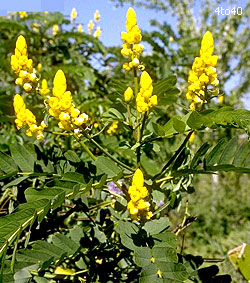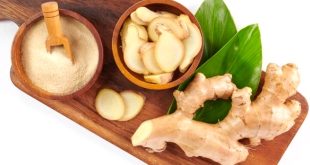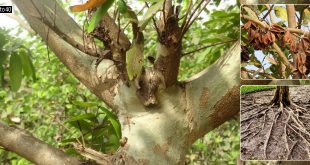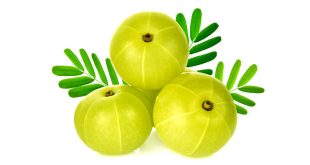Cassia Angustifolia (Senna India, Tinnevelly Senna, Cassia Senna) — Family Name: Caesalpiniaceae
Botanical Name: Cassia Angustifolia
Common Name: Senna, Senna India, Tinnevelly Senna, Cassia Senna
Part Used: Pods, Stems, Leaves
Habitat: Cultivated in dry lands of Southern & Western India, and indigenous to Arabia.
Uses: It is recognized by British and US pharmacopoeias. It is useful in habitual costiveness. It lowers bowels, increases peristaltic movements of the colon by its local action upon the intestinal wall. It is used as expectorant, wound dresser, antidysentric, carminative and laxative.
 Introduction
Introduction
Senna is an Arabian name and the herb was first brought into use by the Arabian physicians Serapion and Mesue. Traditionally Senna was used in love sachets. Plants growing at different localities of India have also been found to contain different amount of sennoside B in leaves and pods, and also differ in chromosome morphology. The leaves and pods of this plant contain the commercially important laxative sennoside B.
CSennosides are hydroxyanthracene glycosides derived from Senna leaves and Pods. Sennosides are natural, safe time-tested laxatives in traditional as well as modern systems of medicine. Sennosides are obtained from Cassia Angustifolia leaves.
Origin
Cassia senna is native to tropical Africa and cultivated in Egypt, Sudan and elsewhere; Cassia angustifolia is native to India also and cultivated mainly in India and Pakistan.
Chemical Composition
In the leaf; sennosides A and B based on the aglycones sennidin A & B, senosides C & D which are glycosides of heterodianthrones of aloe-emodin and rhein are present. Others include palmidin A, rhein anthrone & aloe-emodin glycosides, some free anthraquinones and some potent, novel compounds of as yet undetermined structure. C.Senna usually contains more of the sennosides. In the fruit; sennosides A and B and a closely related glycoside sennoside A1. Naphthalene glycosides; tinnevellin glycoside & 6-hydroxymusizin glycoside Miscellaneous; mucilage, flavonoids, volatile oil, sugars, resins etc.
Pharmacology
The medicinal action of Senna can be attributed mainly to the anthraquinone glycosides, especially sennoside A and B. It appears that the aglycone portion is responsible for its action. The breakdown of the anthraquinone glycosides in the digestive tract can occur in one of two ways. The bowel flora can directly hydrolyze themin a similar way to that of free active aglycone. Alternatively, in the presence of bile and the sugar moiety, the free aglycone can be absorbed into the blood stream and secreted later into the colon. The final result is stimulation of the Auerbach plexus resulting in increased intestinal muscle contraction. In addition, its mucilage content decreases bodily absorption of fluid leading to an enhancement of the final laxative action.
Remedies
Purgative, anthchiiintic, antipyretic, cathartic, laxative, vermifuge, diuretic. Senna is a powerful cathartic used in the treatment of constipation, working through a stimulation of intestinal peristalsis.
 Kids Portal For Parents India Kids Network
Kids Portal For Parents India Kids Network




